Wasps
Wasps are seasonal flying insects that pose a danger to whomever is near their nest. Aggressively protective, they can sting multiple times to protect their colony.
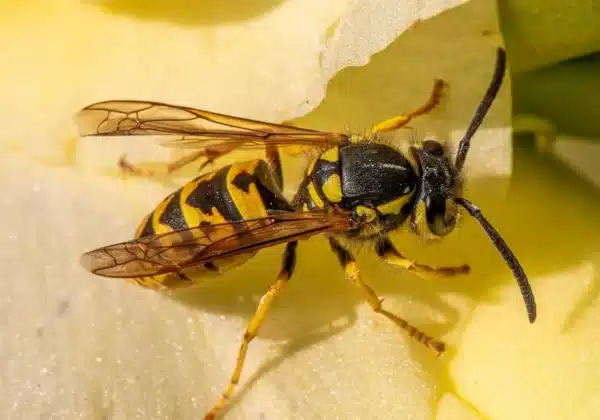
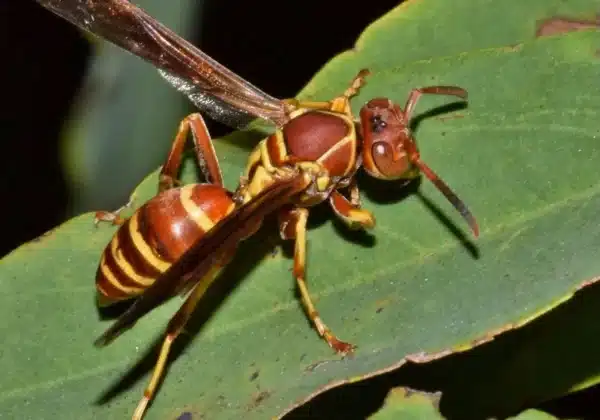
Paper Wasps (Polistes spp.)
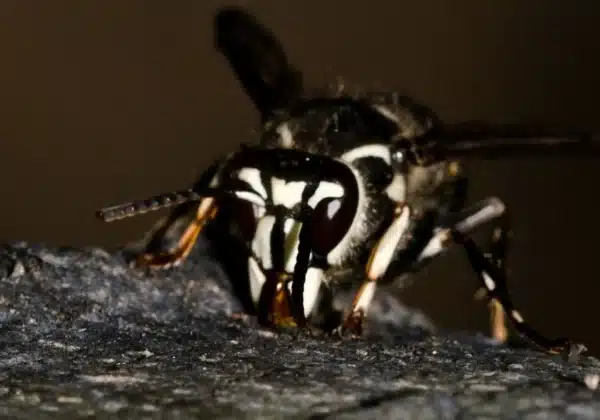
Bald Faced Hornets (Dolichovespula maculata)
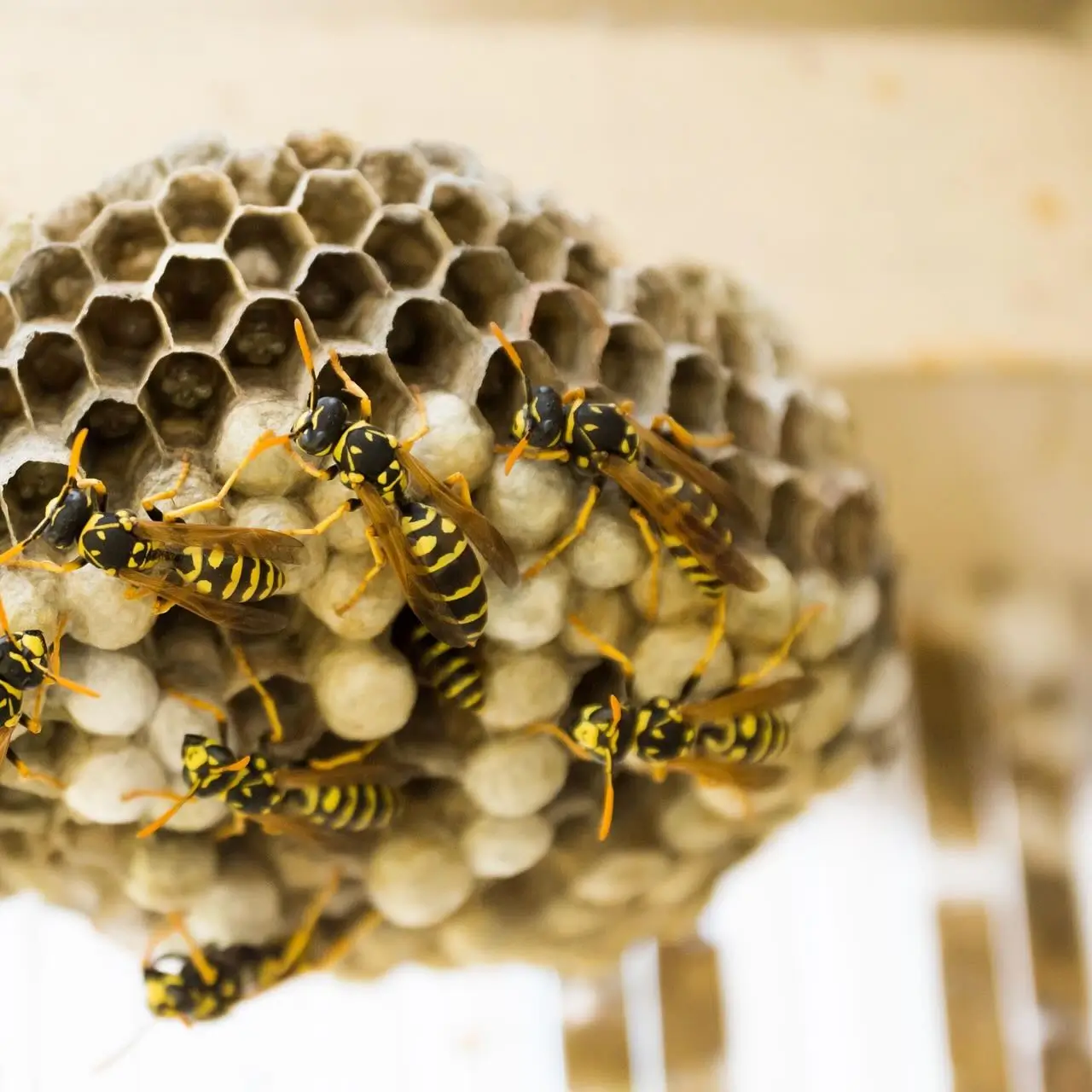
Signs of Wasp Infestation
Visible papery nests in eaves, trees, or wall cavities, increased wasp activity near trash, gardens, or food, and audible buzzing near hidden nests are all telltale signs of wasp presence. Early detection is key, as nests start small in spring and grow rapidly. Ground nests may appear as small soil disturbances. Regularly inspect sheds, decks, and roof spaces for these indicators to manage potential wasp issues.
– Seal cracks and crevices around windows, doors, and eaves to block nest entry points.
– Keep food and drinks covered during outdoor meals or events.
– Remove outdoor garbage regularly and use tight-fitting lids on bins.
– Limit sweet-smelling plants or fruit trees near entrances.
– Inspect for early nests in spring and remove them before colonies grow.
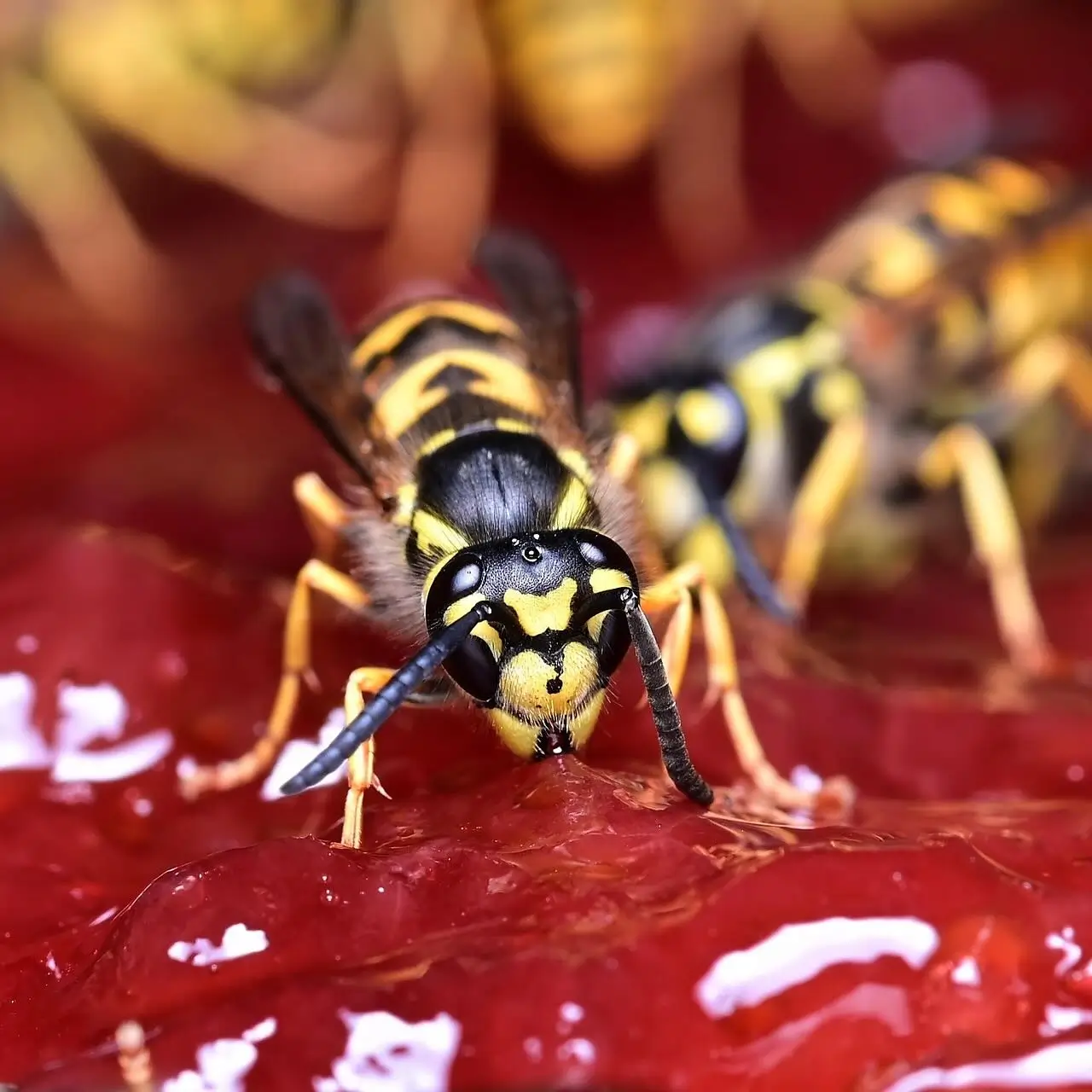
Preventing Wasp Damage
Secure trash bins with tight lids and clean spills quickly. Seal cracks in walls, roofs, and vents to prevent nesting. Avoid leaving food or sweet drinks outside, as they attract wasps. Trim vegetation near buildings to minimize potential nesting sites. Regular maintenance and preventative measures are crucial for a wasp-free environment.

Effective Wasp Treatments
Never disturb active wasp nests yourself; doing so risks multiple stings. Professionals are best to treat wasps nests to eliminate the infestation and maintain a safe environment. After treatment, diligently monitor the previously affected areas for any signs of wasp resurgence. Professional intervention ensures the colony is fully eradicated, minimizing future risks.
Common Questions about Wasps
See below to learn more about Wasps in Ontario, including available treatment options and prevention.
Yellowjackets, paper wasps, and European hornets are prevalent. Bald-faced hornets (a type of yellowjacket) are also found in suburban areas.
Look for nests, frequent sightings near food sources, or buzzing sounds in walls. Multiple stings in one area indicate a nearby colony.
Food scraps, open trash, fallen fruit, and flowering plants. They also seek sheltered nesting sites like attics or sheds.
Most colonies die by late fall, but queens overwinter in sheltered spots. Nests are not reused but may attract new queens if not removed.
Yes. DIY removal is hazardous. Professionals safely relocate or destroy nests, especially those in high-traffic areas or structural voids.

Termites

Wasps

Mice & Rats

Spiders

Bed Bugs

Cockroaches

Fleas

Carpet Beetles
